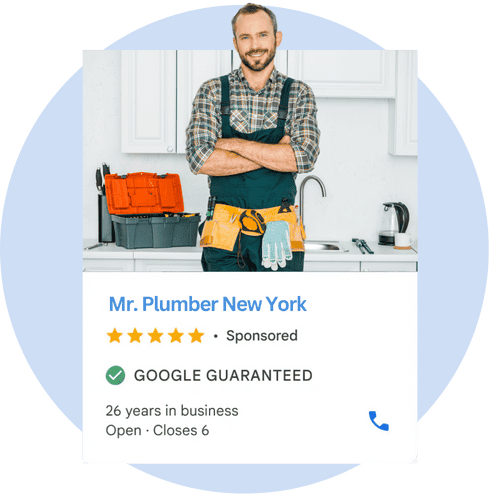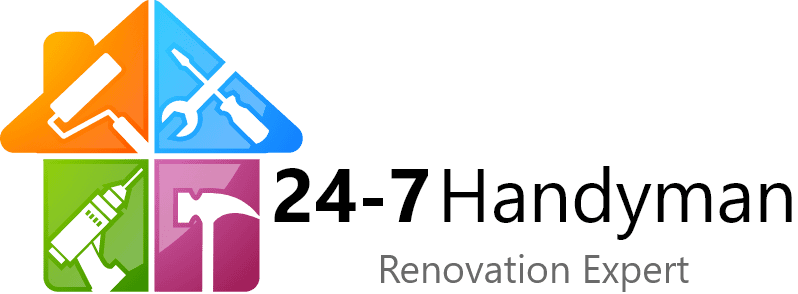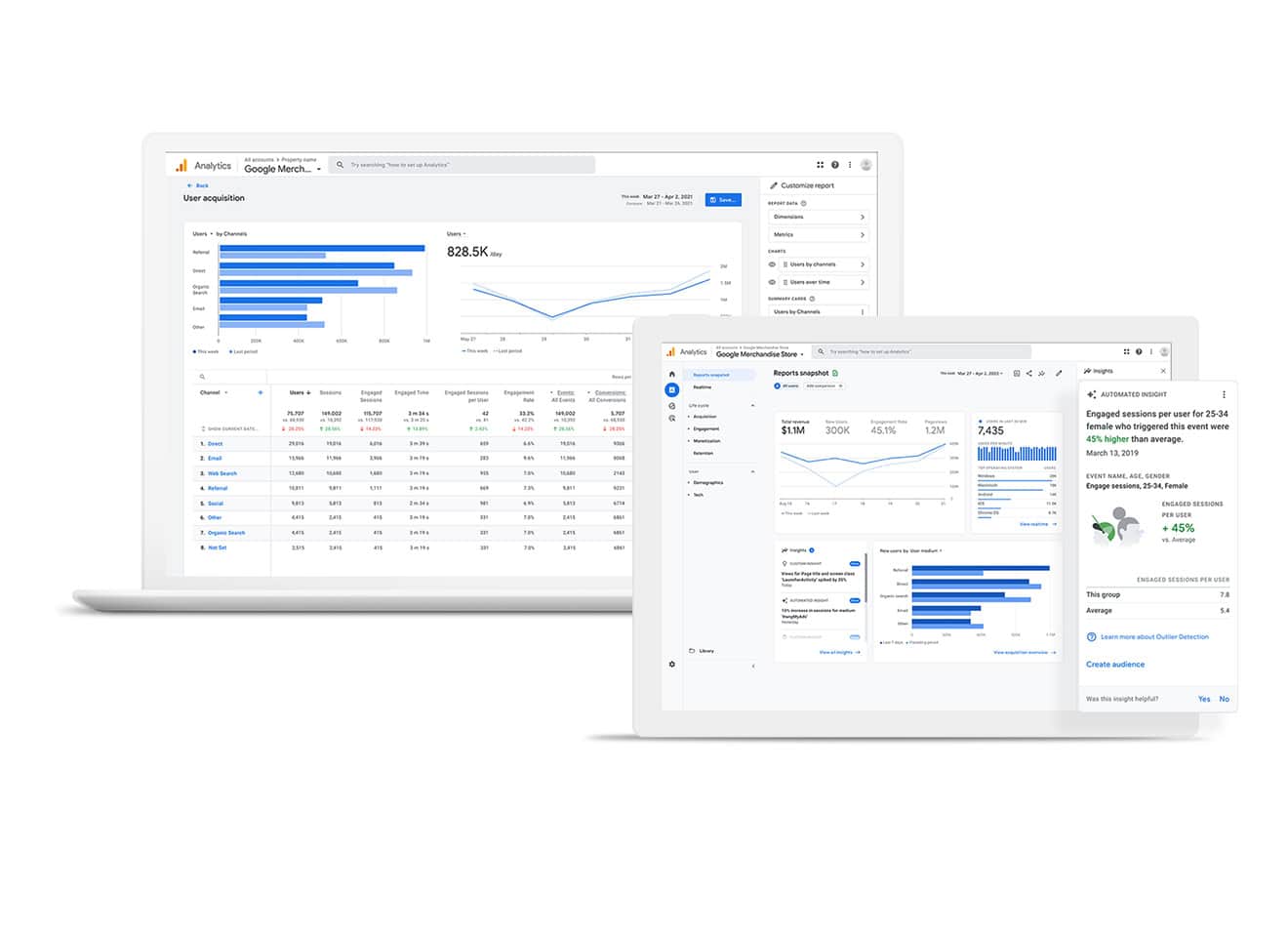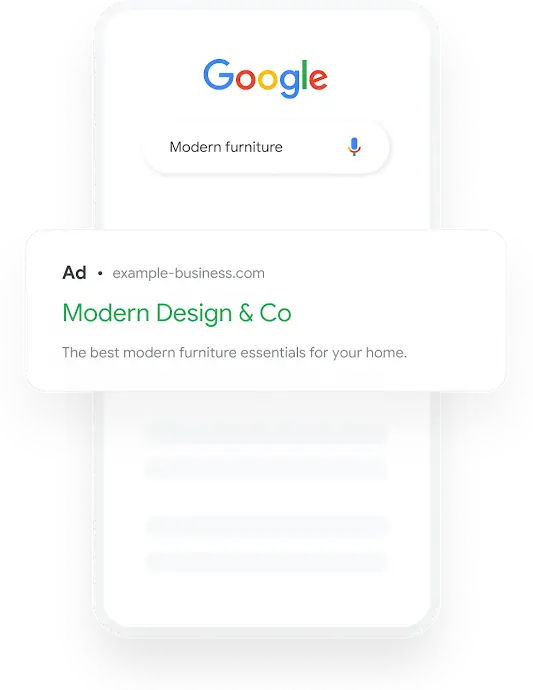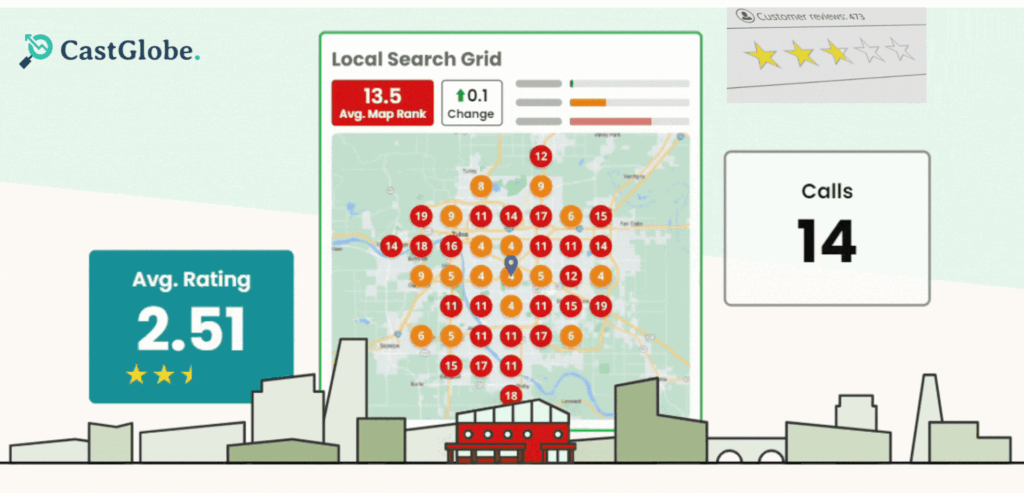Search Engine Marketing (SEM) is a critical component of any digital marketing strategy. As businesses continue to compete for visibility in crowded online spaces, mastering SEM can significantly impact your success. This guide delves into the essential strategies, tools, and techniques that will help you excel in search engine marketing.
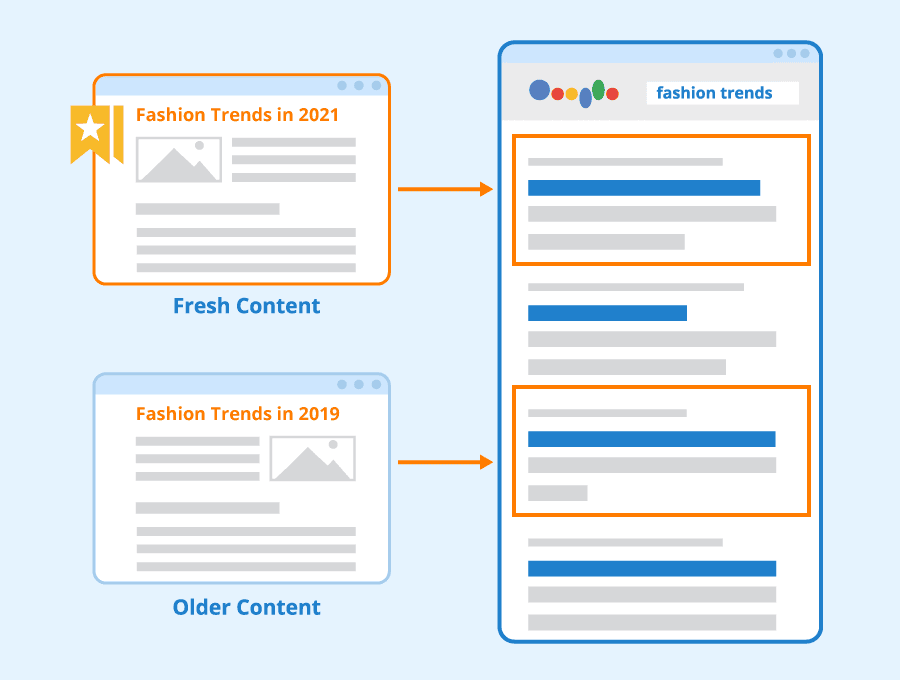
Mastering Search Engine Marketing Visibility
Achieving visibility in search engines is paramount to the success of any SEM strategy. Visibility is not just about ranking; it’s about being seen by the right audience, at the right time, and in the right context.
Optimized On-Page SEO Strategies
On-page SEO is the foundation of search engine visibility. It involves optimizing individual web pages to rank higher and earn more relevant traffic. Key components include:
- Keyword Optimization: Integrate high-value keywords into your content naturally. Focus on long-tail keywords that match the user’s search intent.
- Meta Tags and Descriptions: Write compelling meta titles and descriptions that include primary keywords and encourage click-throughs.
- Header Tags (H1, H2, H3): Use header tags to structure content hierarchically, making it easier for search engines to understand.
- Content Quality: Ensure that your content is informative, well-researched, and provides value to the reader. High-quality content is more likely to be shared and linked to, improving your search ranking.
- Internal Linking: Link to other relevant pages on your website to keep users engaged and improve the crawlability of your site.
Off-Page SEO Techniques for Better Ranking
Off-page SEO refers to actions taken outside your own website to impact your rankings within search engine results pages (SERPs). This includes:
- Backlink Building: Secure high-quality backlinks from authoritative websites. Focus on acquiring links from reputable sources relevant to your industry.
- Social Media Engagement: Increase your content’s reach by sharing it across social media platforms. Social signals, such as likes and shares, can indirectly influence your search rankings.
- Guest Blogging: Contribute valuable content to other websites in your industry. This not only earns backlinks but also establishes your authority in your niche.
- Online Directories and Citations: Ensure your business is listed accurately in relevant online directories. Consistent NAP (Name, Address, Phone) information is crucial for local SEO.
Local SEO Optimization for Location-Based Businesses
For businesses serving specific geographic areas, local SEO is essential. Optimizing for local search involves:
- Google My Business (GMB) Profile: Claim and optimize your GMB listing. Include accurate business information, photos, and customer reviews.
- Local Keywords: Incorporate local keywords into your website content, meta descriptions, and GMB profile. For example, “best coffee shop in downtown Seattle.”
- Localized Content: Create content that speaks to local events, news, or topics relevant to your area. This can help attract local visitors to your site.
- Customer Reviews: Encourage satisfied customers to leave positive reviews on your GMB profile and other review platforms. Responding to reviews shows engagement and can improve your local ranking.
Voice Search Optimization: The Future of Search
Voice search is rapidly changing the way users interact with search engines. To stay ahead, you need to optimize your content for voice search:
- Conversational Keywords: Focus on natural, conversational phrases that users might say aloud rather than type. Questions like “What’s the best Italian restaurant near me?” are common in voice searches.
- Featured Snippets: Aim to have your content appear in featured snippets, as these are often read aloud by voice assistants.
- Mobile Optimization: Ensure your website is mobile-friendly. Voice searches are predominantly conducted on mobile devices.
- Structured Data: Implement schema markup to provide search engines with detailed information about your content, improving the chances of appearing in voice search results.
Paid Search Campaigns: Driving Targeted Traffic
Paid search campaigns, particularly Pay-Per-Click (PPC), are an effective way to drive targeted traffic to your site. With careful management and strategic targeting, PPC can deliver impressive ROI.
Pay-Per-Click (PPC) Campaign Management
PPC campaigns are a cornerstone of SEM. Effective management involves:
- Campaign Structure: Organize your PPC campaigns into well-defined ad groups that target specific keywords. This improves relevance and Quality Score.
- Ad Copywriting: Craft compelling ad copy that highlights your unique selling points (USPs) and includes a strong call to action (CTA).
- Budget Management: Allocate your budget strategically across campaigns, focusing more on high-converting keywords. Monitor spending to ensure you’re maximizing ROI.
- A/B Testing: Continuously test different versions of your ads, landing pages, and CTAs to determine what resonates best with your audience.
Keyword Research for High-Intent Targeting
The success of any PPC campaign hinges on thorough keyword research. To target high-intent keywords:
- Identify Buyer Intent: Focus on keywords that indicate a high likelihood of conversion, such as “buy,” “best,” “discount,” or location-based terms.
- Competitor Analysis: Use tools like SEMrush or Ahrefs to analyze competitor keywords. Identify gaps and opportunities where you can outperform them.
- Long-Tail Keywords: Target long-tail keywords that are less competitive but have a high conversion potential. These often represent specific search intent.
- Negative Keywords: Regularly update your list of negative keywords to prevent your ads from showing up for irrelevant searches, saving your budget for more qualified leads.
Conversion Rate Optimization for PPC Campaigns
Driving traffic is only half the battle; converting that traffic is equally important. Conversion rate optimization (CRO) for PPC campaigns involves:
- Landing Page Design: Ensure that your landing pages are optimized for conversions. This includes clear CTAs, compelling headlines, and relevant content that matches the ad.
- Mobile Optimization: With a significant portion of traffic coming from mobile devices, your landing pages must be responsive and load quickly on mobile.
- User Experience (UX): Simplify the user journey by minimizing distractions on your landing page. A clean, intuitive design can significantly improve conversion rates.
- Analytics and Adjustments: Use tools like Google Analytics to track conversions and user behavior on your landing pages. Make data-driven adjustments to improve performance.
Content Marketing and Search Engine Synergy
Content marketing and SEM go hand in hand. Quality content not only engages your audience but also improves your search engine rankings.
Creating Search-Optimized Content
Content that is optimized for search engines can drive organic traffic and support your SEM efforts. To create search-optimized content:
- Keyword Integration: Incorporate keywords naturally into your content, ensuring they align with the user’s search intent.
- Content Structure: Use a clear and logical structure, with headings, bullet points, and short paragraphs. This makes your content easy to read and improves its chances of ranking well.
- Engaging Formats: Experiment with different content formats such as blogs, infographics, and lists. Diverse formats can attract a broader audience.
- Regular Updates: Keep your content fresh and relevant by regularly updating it. This signals to search engines that your content is current and worth ranking.
Content Promotion for Better Search Visibility
Creating great content is just the first step; promoting it effectively is key to enhancing its visibility in search engines:
- Social Sharing: Share your content across social media platforms to reach a wider audience. Encourage followers to share it, amplifying its reach.
- Email Marketing: Use email newsletters to promote your content directly to your audience. Personalized content recommendations can increase engagement.
- Influencer Outreach: Collaborate with industry influencers to promote your content. Their endorsement can drive significant traffic and backlinks.
- Content Syndication: Distribute your content on other platforms to increase its exposure. Syndicated content can attract new audiences and generate more backlinks.
Video SEO: Optimizing Video Content for Search
Video content is increasingly popular and can be a powerful tool in your SEM strategy. To optimize video content for search:
- Video Keywords: Use tools like YouTube’s autocomplete or keyword research tools to find popular video search terms and include them in your titles and descriptions.
- Transcriptions: Provide transcriptions for your videos. This not only improves accessibility but also allows search engines to index your content more effectively.
- Thumbnails and Titles: Create engaging thumbnails and titles that encourage clicks. A higher click-through rate (CTR) can improve your video’s ranking on platforms like YouTube.
- Video Sitemaps: Submit a video sitemap to search engines to help them discover and index your video content.
Competitive Analysis and Market Intelligence
Understanding your competition and the broader market is essential for SEM success. Competitive analysis and market intelligence provide the insights needed to refine your strategies.
Monitoring Competitor SEM Tactics
Keeping an eye on your competitors’ SEM strategies allows you to identify strengths and weaknesses. To monitor competitor tactics:
- Keyword Tracking: Use tools to track the keywords your competitors are ranking for and bidding on. This can reveal opportunities to target similar or better keywords.
- Ad Copy Analysis: Study your competitors’ ad copy to understand their messaging and identify ways to differentiate your own ads.
- Backlink Analysis: Analyze your competitors’ backlink profiles to find link-building opportunities. Tools like Ahrefs or Moz can be particularly useful.
- Content Strategy: Observe the types of content your competitors are producing and which ones are performing well. Use this information to inform your own content strategy.
Leveraging Search Data Insights
Search data provides valuable insights into user behavior, preferences, and trends. Leveraging these insights can improve your SEM strategies:
- Google Search Console: Use this tool to gain insights into the queries driving traffic to your site. Identify trends and adjust your content and keyword strategies accordingly.
- Market Research Tools: Utilize tools like SEMrush or Google Trends to analyze search volume, competition, and related queries. These insights can guide your content and PPC campaigns.
- Customer Feedback: Incorporate customer feedback and reviews into your search data analysis. Understanding user sentiment can help refine your SEM approach.
Identifying Market Gaps and Opportunities
Identifying gaps in the market can give you a competitive edge. To spot these opportunities:
- Competitor Weaknesses: Look for areas where your competitors are underperforming or not fully addressing customer needs. This could be in their content, keywords, or ad targeting.
- Emerging Trends: Stay updated on industry trends and emerging technologies that your competitors may not yet be leveraging.
- Niche Markets: Explore niche markets or subtopics within your industry that are underserved. Targeting these areas can help you capture a more specific audience.
Omnichannel Search Engine Marketing
An omnichannel approach to SEM ensures that your marketing efforts are coordinated across all channels, providing a seamless user experience.
Coordinating SEM Across Multiple Channels
To maximize the impact of your SEM efforts, it’s crucial to ensure that your strategies are consistent across all channels:
- Unified Messaging: Maintain consistent messaging and branding across paid search, social media, email marketing, and other channels. This reinforces brand recognition.
- Cross-Channel Retargeting: Use retargeting strategies across multiple platforms to re-engage users who have interacted with your brand.
- Integrated Analytics: Track and analyze performance across all channels using tools like Google Analytics or HubSpot. Integrated data allows for more informed decision-making.
- Channel-Specific Strategies: While maintaining overall consistency, tailor your strategies to the strengths and user behavior of each channel. For example, optimize for visual content on Instagram and more detailed content on LinkedIn.
Mobile-First Search Strategies
With mobile searches outpacing desktop, having a mobile-first SEM strategy is essential:
- Responsive Design: Ensure that your website and landing pages are fully responsive and provide a seamless experience on mobile devices.
- Accelerated Mobile Pages (AMP): Implement AMP to improve load times on mobile devices. Faster load times can improve both user experience and search rankings.
- Mobile-Specific Keywords: Target keywords that are more commonly used on mobile devices. These may include voice search queries or location-based searches.
- Mobile Ad Formats: Optimize your PPC campaigns for mobile by using ad formats that work well on smaller screens, such as call-only ads or mobile app ads.
Programmatic Advertising in SEM
Programmatic advertising uses AI and machine learning to automate the buying of ads, making your SEM campaigns more efficient and effective:
- Real-Time Bidding: Leverage real-time bidding to automatically purchase ad space based on predetermined criteria, ensuring your ads are shown to the right audience at the right time.
- Audience Segmentation: Use programmatic platforms to segment your audience based on behavior, demographics, or location. This allows for more targeted ad placements.
- Ad Personalization: Personalize ads dynamically based on user data. Programmatic advertising can deliver personalized experiences at scale, improving engagement and conversions.
- Performance Monitoring: Continuously monitor the performance of your programmatic ads and adjust your strategy in real-time to maximize ROI.
Personalized and Tailored Search Experiences
Delivering personalized search experiences is becoming increasingly important as users expect more relevant and individualized content.
Understanding User Search Intent
To deliver personalized experiences, it’s essential to understand the intent behind user searches:
- Search Query Analysis: Analyze the specific words and phrases users search for to understand their needs and goals. This helps in tailoring your content and ads.
- User Segmentation: Segment your audience based on their search behavior. Different segments may require different content, keywords, or ad messaging.
- Intent-Based Keywords: Focus on keywords that align with different stages of the buyer’s journey, such as informational, navigational, or transactional keywords.
Delivering Personalized Search Experiences
Personalized search experiences can lead to higher engagement and conversion rates:
- Dynamic Content: Use dynamic content on your website and in your ads that changes based on user behavior, location, or other factors.
- Personalized Recommendations: Implement recommendation engines that suggest products or content based on past user behavior. This can increase user satisfaction and conversions.
- Behavioral Targeting: Use behavioral targeting to show ads that are more relevant to the user’s past interactions with your brand. This increases the chances of engagement.
Ethical SEM Practices and Transparency
As personalization becomes more prevalent, maintaining ethical SEM practices and transparency is crucial:
- Data Privacy: Ensure that your data collection and usage practices comply with privacy regulations like GDPR. Be transparent about how you collect and use user data.
- Honest Advertising: Avoid misleading ads and ensure that your SEM practices are honest and straightforward. Transparency builds trust with your audience.
- Ethical Targeting: Be mindful of the ethical implications of your targeting strategies. Avoid practices that could be perceived as intrusive or discriminatory.
Measuring and Optimizing SEM Performance
Continuous measurement and optimization are key to the success of any SEM strategy. By focusing on the right metrics, you can make informed decisions to improve your campaigns.
Key Metrics and KPIs for SEM
To measure the effectiveness of your SEM efforts, track the following key performance indicators (KPIs):
- Click-Through Rate (CTR): Measures the percentage of users who click on your ad after seeing it. A higher CTR indicates that your ad is relevant to the audience.
- Conversion Rate: The percentage of users who complete a desired action, such as making a purchase or filling out a form, after clicking on your ad.
- Cost Per Acquisition (CPA): The average cost of acquiring a customer through your SEM efforts. Lowering CPA while maintaining or increasing conversions is a key goal.
- Quality Score: Google’s measure of the quality and relevance of your keywords and ads. A higher Quality Score can lead to lower costs and better ad placements.
Data-Driven SEM Optimization
Data-driven optimization involves using analytics to continually refine your SEM strategies:
- A/B Testing: Regularly test different versions of your ads, landing pages, and keywords to determine what works best. Use the data to optimize performance.
- Performance Analysis: Use tools like Google Analytics, SEMrush, or Moz to analyze campaign performance. Look for trends and patterns that can inform your strategy.
- Algorithm Updates: Stay informed about search engine algorithm updates. These can impact your rankings, and adjusting your strategy accordingly is crucial.
SEM for Ecommerce Businesses
Ecommerce businesses can greatly benefit from SEM strategies tailored to their needs:
- Product Listing Ads (PLAs): Utilize PLAs to showcase your products directly in search results. These ads include product images, prices, and merchant information.
- Shopping Campaigns: Set up Google Shopping campaigns to promote your products. Optimize your product feed with relevant keywords and accurate descriptions.
- Remarketing: Implement remarketing strategies to target users who have previously visited your site but did not make a purchase. These campaigns can boost conversions.
The Future of Search Engine Marketing
As the digital landscape evolves, so too must your SEM strategies. Staying ahead of emerging trends and technologies is key to maintaining a competitive edge.
Emerging SEM Technologies and Trends
The future of SEM will be shaped by new technologies and trends:
- Artificial Intelligence (AI): AI will play a larger role in SEM, from automating campaign management to enhancing user targeting with predictive analytics.
- Voice Search: As voice search continues to grow, optimizing for conversational queries and natural language will become increasingly important.
- Visual Search: Visual search technology, where users search using images rather than text, is on the rise. Optimizing your content for visual search will be crucial.
Adapting to the Evolving Search Landscape
To stay competitive, businesses must be agile and adapt to changes in the search landscape:
- Algorithm Adaptation: Keep up with search engine algorithm updates and adjust your SEO strategies accordingly.
- User Experience Focus: As search engines increasingly prioritize user experience, ensure that your website is fast, mobile-friendly, and easy to navigate.
- Sustainable Practices: Focus on long-term, sustainable SEM practices rather than trying to exploit short-term trends. This ensures consistent performance over time.
In conclusion, mastering SEM is an ongoing process that requires a deep understanding of both the technical and creative aspects of search engine marketing. By implementing the strategies outlined in this guide, you can enhance your online visibility, drive targeted traffic, and ultimately achieve SEM success.
Resources

